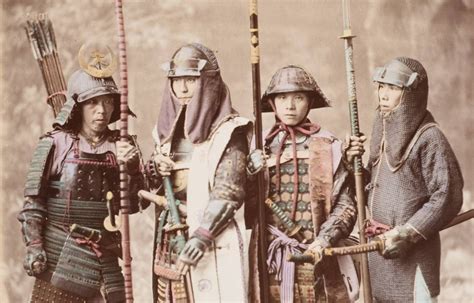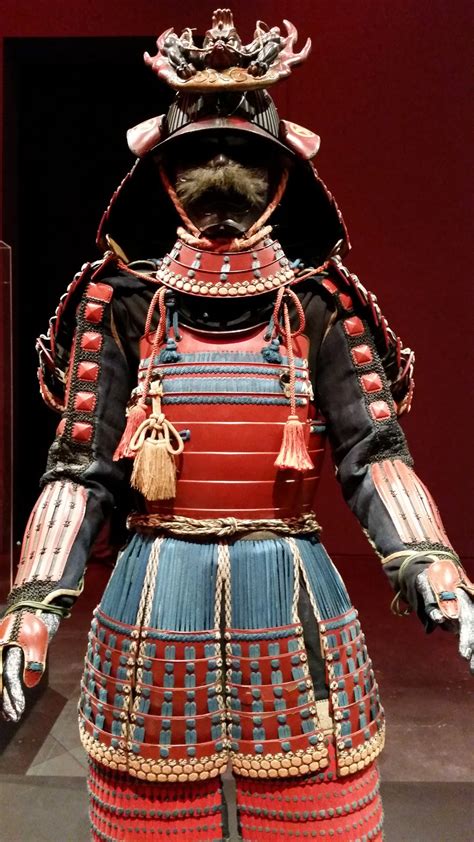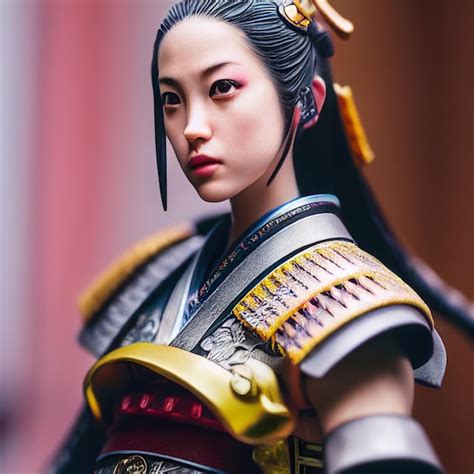Adorned in traditional armor, armed with fearsome weapons, and shrouded in an aura of mystery, the legendary samurai warriors of Japan have captivated the imaginations of people around the globe for centuries. Their tales of honor, loyalty, and unmatched skill on the battlefield continue to inspire awe and fascination to this day. Let us embark on a journey through the enigmatic realm of these noble fighters, exploring the history, customs, and enduring legacy that make them so iconic.
A Rich Tapestry of History and Tradition
Within the vast and diverse cultural landscape of Japan, the samurai stand as an enduring symbol of the nation's ancient heritage. Spanning many centuries, their history is woven intricately into the fabric of Japanese society, shaping its values, arts, and rituals. These warriors, known for their unwavering dedication and indomitable spirit, were more than just skilled fighters - they embodied the essence of the samurai code, known as Bushido.
The Code of the Samurai
At the core of samurai philosophy lies Bushido, a moral and ethical code that emphasized virtues such as loyalty, honor, and self-discipline. Bushido, often referred to as the "Way of the Warrior," shaped every aspect of a samurai's life - from their conduct on the battlefield to their interactions within society. It dictated not only their actions but also their mindset, fostering a relentless pursuit of excellence and a commitment to noble ideals.
Masters of the Sword
Central to the mythos of the samurai is their unparalleled mastery of the sword, which served as both a tool of combat and a representation of their status. Renowned for their swift and precise strikes, samurai warriors trained tirelessly in the art of kenjutsu, honing their skills to achieve near-perfection. The sword became an extension of their being, a symbol of their identity as elite warriors. Even today, ancient swordsmanship techniques are passed down through generations, preserving the essence of this timeless tradition.
The Origins of Samurai: Tracing the Ancestry of Japanese Warriors

In this section, we delve deep into the historical beginnings of the renowned warriors of Japan, seeking to uncover the ancestral origins that shaped the identity of the Samurai. By examining the roots and lineage of these iconic figures, we aim to gain a better understanding of the cultural and societal factors that contributed to the development of the Samurai class.
Embarking on a journey through time, we trace back the origins of the Samurai to ancient Japan, millennia ago. Exploring the rich tapestry of Japanese history, we uncover the fascinating blend of indigenous tradition and foreign influences that played a crucial role in the formation of these distinguished warriors. Through meticulous research and analysis, we aim to unveil the layers of history that have shaped the essence of the Samurai.
Unveiling the early beginnings, we explore the early prototypes of warriors in Japanese society, discerning the ancient practices and ideals that laid the foundation for the Samurai tradition. From the emergence of warrior clans to the codes of honor and loyalty that governed their conduct, we study the intricate web of cultural, social, and military aspects that intertwined to give rise to the Samurai class.
An intricate tapestry of influences shaped the growth and evolution of the Samurai, as we examine the intricate interactions with neighboring cultures and the flux of war and peace that characterized Japan's history. From the indigenous Yamato period to the influx of continental philosophies and military techniques, we explore the amalgamation of diverse elements that contributed to the distinctive identity of the Samurai.
Through this exploration of the origins of Samurai, we hope to gain insight into the historical context in which these legendary warriors arose. By tracing their lineage and understanding the underlying cultural dynamics that shaped their ethos, we begin to unravel the mystique surrounding the Samurai, illuminating their significance and influence in Japanese history and beyond.
Unearthing Japan's Noble Heritage: Tracing the Ancestral Roots of Japan's Esteemed Military Class
Within the intricate tapestry of Japan's rich history lies a lineage of warriors who embodied unparalleled skill, unwavering loyalty, and an indomitable spirit. By delving into the untold tales of Japan's elite military class, we embark on a captivating journey through time, unraveling the ancient origins and ancestral heritage that shaped the illustrious samurai tradition.
Discovering an Era of Nobility: Before immersing ourselves in the enigmatic world of samurai, it is essential to comprehend the historical context that birthed this esteemed military class. Emerging in feudal Japan during the Heian period, the samurai class evolved from regional warriors into esteemed noble figures intricately tied to the ruling aristocracy.
Unraveling the Ancestral Roots: Tracing the ancestry of Japan's elite military class unveils connections to the ancient Yamato dynasty, a lineage steeped in legend and revered as the cradle of Japanese civilization. From the mythical origins of Emperor Jimmu, Japan's first ruler, to the noble bloodlines of Yoshitsune and Yoshinaka, influential samurai figures, we witness the interplay between myth and reality in shaping the identity and prowess of these revered warriors.
Embodying the Bushido Code: As we delve deeper into Japan's ancient lineage, we encounter the essence of the samurai's code of conduct: the Bushido. Emphasizing honor, loyalty, and self-discipline, the Bushido served as the guiding moral compass for samurai warriors, shaping their actions both on and off the battlefield. Exploring the multifaceted layers of this code sheds light on the profound influence it had on Japan's elite military class and their indelible mark on the nation's history.
Celebrating Noble Lineages: Within the expansive realm of the samurai's lineage, various remarkable bloodlines emerged, each with its own unique legacy. From the Taira clan, renowned for its fierce battles against the Minamoto clan, to the illustrious Minamoto clan, which birthed legendary figures like Yoritomo and Yoshitsune, we untangle the intricate webs of noble bloodlines that echoed through the centuries, leaving an indelible imprint on Japan's martial traditions.
By peering into the ancestral origins and noble heritage that underpinned Japan's elite military class, we gain a deeper appreciation for the samurai's indomitable spirit and their enduring impact on Japan's historical narrative. Through their unwavering dedication, exceptional skill, and unwavering loyalty, the samurai continue to captivate and inspire us, transcending the boundaries of time.
The Way of the Warrior: Unlocking the Essence of Bushido

In this segment, we embark on a journey to unravel the profound ideals and principles inherent in the Samurai code - Bushido. Delve into the timeless philosophy that shaped the essence of the legendary Japanese warriors, a way of life that continues to captivate hearts and minds to this day.
Transcending the realm of mere combat proficiency, Bushido is an intricate tapestry of moral values, personal conduct, and spiritual growth. With its origins deeply rooted in the feudal era of Japan, it is a code that not only guided the actions of the Samurai, but also influenced the culture and character of the nation as a whole. The core principles of Bushido encapsulate concepts such as honor, loyalty, courage, benevolence, and righteousness, presenting a holistic approach to living a disciplined and harmonious life.
Embodied in the Samurai's commitment to their lord, their unwavering dedication to their comrades, and their unyielding perseverance in the face of adversity, Bushido serves as a compass, guiding individuals to navigate through the complexities of existence. It promotes integrity, humility, and self-improvement, fostering a mindset that goes beyond the act of wielding a sword, penetrating deep into the realm of the human spirit.
Join us as we delve into the underlying principles of Bushido, decoding the intricate concepts that defined the Samurai. Explore the notion of "Rectitude" (Gi), the cornerstone of upholding moral righteousness, dissect the multifaceted concept of "Courage" (Yūki), and understand how "Benevolence" (Jin) fueled compassion and empathy within the hearts of the formidable warriors. With each principle, we will uncover the profound wisdom that guided the Samurai in their pursuit of excellence.
Discover how Bushido continues to resonate in modern-day Japan, as it is woven into the fabric of traditional Japanese culture, inspiring individuals worldwide to harness the indomitable spirit of the Samurai in their own lives.
Honor, Loyalty, and Duty: Understanding the Ethical Framework of Samurai
In this section, we will delve into the profound ethical principles that shaped the mindset and behavior of the ancient Japanese warriors, exploring their unwavering commitment to honor, loyalty, and duty. By dissecting the core values that underpinned the Samurai code of conduct, we aim to gain a deeper understanding of the ethical framework that guided their actions and decisions.
| Principle | Description |
|---|---|
| Honor | Representing the pinnacle of Samurai virtues, honor was the driving force behind every aspect of their lives. It encompassed integrity, righteousness, and a deep sense of personal responsibility. |
| Loyalty | Samurai were known for their unwavering loyalty to their lord or master. They considered it their utmost duty to serve and protect those they swore allegiance to, regardless of their own personal sacrifices. |
| Duty | Duty formed the bedrock of the Samurai's moral compass. They believed that it was their duty to fulfill their obligations and responsibilities towards their lord, their family, and society as a whole. |
The Samurai understood that their strict adherence to these ethical principles not only elevated their individual standing but also contributed to the stability and prosperity of their feudal society. This unwritten code of conduct, commonly known as Bushido, defined the essence of what it meant to be a Samurai, shaping their actions on and off the battlefield.
Furthermore, the ethical framework of Samurai allowed them to navigate the complex social hierarchy of feudal Japan with grace and dignity. Their actions were guided by the principles of right and wrong, ensuring that they carried themselves with honor and integrity in every interaction.
By immersing ourselves in the world of ancient Japanese warriors, we can gain valuable insights into the timeless principles of honor, loyalty, and duty. Understanding the ethical framework of the Samurai not only enriches our knowledge of history but also provides us with valuable lessons that can be applied to our modern lives.
The Way of the Blade: Unraveling the Mastery of Samurai Swordsmanship

In this unique section, we delve into the fascinating artistry and disciplined skill set required to excel in the ancient art of the samurai sword. Journey with us as we explore the intricacies of swordsmanship, unveiling the core principles and techniques that define the way of the samurai.
Embarking on the path of a samurai necessitates unwavering dedication and discipline, as well as a profound understanding of the sword as an extension of oneself. We delve into the essence of the samurai's connection with their weapon, examining the harmonious fusion of mind, body, and blade that enables them to achieve a state of extraordinary prowess.
Discover the underpinning philosophies that guide the cutting-edge techniques employed by samurai warriors. From the elegant fluidity of iaido, the art of quick-drawing the sword, to the dynamic precision of kenjutsu, the way of the sword, we explore the multifaceted nature of their martial expertise.
Furthermore, we unravel the significance of the samurai sword's physical attributes. From the craftsmanship behind its creation to the symbolic meanings conveyed through its design and decorations, each aspect contributes to its formidable presence and power as a weapon.
Through examining the training regimens employed by samurai, we gain insight into the rigorous and methodical approach they adopt to attain mastery. From tireless repetition of basic movements to the cultivation of spiritual discipline, we unravel the layers of dedication required to truly embody the way of the sword.
Join us as we uncover the artful techniques, philosophical tenets, and captivating mystique that encapsulate the ancient art of the sword on the samurai's path towards self-discovery and enlightenment.
From Katana to Samurai Swordsmanship: Unveiling the Martial Expertise of Japanese Fighters
In this segment, we delve into the profound realm of the legendary samurai warriors of ancient Japan. We embark on a captivating journey to understand the profound significance of the katana, the iconic weapon synonymous with the samurai's unparalleled combat skills. Additionally, we explore the intricate art of samurai swordsmanship, enchanting martial techniques passed down through generations, showcasing the indomitable spirit and discipline of these esteemed warriors.
Intriguingly, the katana, also known as the samurai sword, symbolizes the epitome of the samurai's physical prowess and spiritual prominence. This distinguished blade possesses an elegance forged by skillful swordsmiths, combining masterful artistry with practical functionality. We decipher the symbolic importance attached to the katana, unraveling its connection to honor, loyalty, and unwavering dedication to the samurai code of conduct.
- Delve into the historical origins of the katana, tracing its roots back to the feudal era of Japan, where its lineage intertwines with the rise of the samurai class.
- Explore the meticulous craftsmanship involved in forging the katana, unraveling the intricate process of creating a blade renowned for its exceptional strength, sharpness, and flexibility.
- Examine the unique design elements incorporated in the katana, such as its curved blade, handle wrapping, and ornate hilt, which reflect the samurai's individual identity and style.
- Uncover the spiritual aspects interwoven with the katana, diving into the concept of the sword possessing a "soul," transcending its physical form and forging a deep connection between the wielder and the weapon itself.
Moreover, we immerse ourselves in the remarkable art of samurai swordsmanship, a disciplined practice constructed on principles of precision, quick reflexes, and unwavering concentration. Through a comprehensive exploration of various sword-fighting techniques, we gain insights into the grace, agility, and strategic brilliance that defined the samurai's martial expertise.
- Discover the fundamental stances and footwork crucial to achieving balance, mobility, and control during combat.
- Unleash the power of the samurai's striking techniques, including lightning-fast slashes, precision thrusts, and parries, all executed with breathtaking efficiency.
- Uncover the arts of "Iaijutsu" and "Battojutsu," the concealed styles of drawing and re-sheathing the katana in a single fluid motion, embodying the essence of surprise and swift action.
- As we conclude our exploration, we reflect on the significant impact of samurai swordsmanship on modern martial arts styles, honoring the lasting legacy of these exceptional warriors.
In essence, this captivating segment immerses us in the captivating world of the samurai's martial skills, paying tribute to their unwavering dedication to perfection and unrivaled artistry in combat.
Samurai Armor: The Protective Shells of Japan's Noble Warriors

In this section, we will delve into the remarkable world of samurai armor, the formidable protective gear worn by the esteemed Japanese warriors. As they embarked on their noble quest, samurais relied on these intricate shells to guard themselves from the perils of battle and demonstrate their status.
Each suit of samurai armor served as a testament to the craftsmanship and ingenuity of Japan's skilled artisans. These meticulously crafted suits were not only functional but also works of art, reflecting the aesthetics and values upheld by the samurais. The armor consisted of various components, such as the helmet, cuirass, arm guards, and leg protectors, designed to provide comprehensive protection without sacrificing mobility.
The helmet, known as "Kabuto," held significant symbolic meaning. It displayed intricate crests and decorations, highlighting the identity and rank of the wearer. The construction of the helmet ensured both protection and visibility, with its various elements, including the hachi (bowl), shikoro (neck guard), and menpo (face mask).
The main body of the armor, called cuirass or "Do," covered the samurai's chest and back, ensuring vital organs remained safeguarded during combat. It was crafted using layers of materials such as iron, leather, and lacquer, forming a sturdy yet flexible barrier. The cuirass also bore the samurai's family crests and intricate designs, showcasing their lineage and personal style.
Arm guards, referred to as "Kote," protected the warrior's arms from incoming attacks. Constructed with small plates of metal or stitched fabric, these guards offered flexibility without compromising protection. They allowed the samurai to wield their weapons effectively while keeping their arms safe and secure.
Leg protectors, known as "Suneate," shielded the lower limbs from harm. These greaves were essential for mobility during combat, offering ample protection to the shin and calf without limiting the samurai's movement. Intricate details and motifs adorned the surface of these protectors, further reflecting the warrior's identity and status.
The artistry and functionality of samurai armor showcased the dedication and skill of Japan's master craftsmen while embodying the noble spirit and traditions of the samurai themselves. It remains a testament to the enduring legacy of these revered warriors and continues to captivate enthusiasts worldwide.
Aesthetic Elegance and Practicality of Traditional Armor worn by Samurai Warriors
Delving into the realm of ancient Japanese warriors reveals a captivating fusion of aesthetic beauty and functional design in their traditional armors. These splendid suits of armor worn by samurai during battles embody the rich cultural heritage and the profound significance of martial arts in ancient Japan.
Extensive attention to detail and craftsmanship is evident in every aspect of these remarkable armors. The impeccable artistry in the construction of each armor piece showcases the skill and dedication of the armorers. Intricately designed from top to bottom, these armors combine robust protection with visually striking elements, merging both form and function.
- Helmet: The elaborate helmets, known as kabuto, are adorned with exquisite details and symbolic crests, reflecting the wearer's status and family lineage.
- Face mask: Protective face masks, or menpō, are crafted with precision and are often embellished with striking features resembling fearsome demons or serene deities.
- Armor plates: The chest and back plates, composed of multiple layers of lacquered metal, are designed to provide ample protection while allowing flexibility and ease of movement.
- Shoulder guards: Elaborately crafted shoulder guards, or sode, not only protect the samurai's shoulders but also add to the overall majesty of the armor, often featuring intricate engravings and unique decorative elements.
- Gauntlets and greaves: The gauntlets and greaves, known respectively as kote and suneate, offer protection to the warrior's arms and legs, ensuring a comprehensive defense against potential adversaries.
While meticulously preserving the aesthetic beauty of Japanese art and culture, these armors were primarily designed to withstand the rigors of battle. The combination of durability, flexibility, and protective features showcases the practicality that went into the creation of samurai armors, enabling the warriors to move swiftly while remaining safeguarded during combat.
The traditional samurai armors brilliantly represent the fusion of artistic elegance and practical functionality. Examining the intricate details and masterful craftsmanship of these armors not only provides a glimpse into the life of samurai warriors but also reveals the profound appreciation of beauty and discipline that defined ancient Japanese martial culture.
Women Warriors: Extraordinary Tales of Female Samurai

Unveiling the untold stories of remarkable women who defied societal norms and took up the path of the sword, this section sheds light on the courageous female samurai of Japan. Through their unwavering determination and exceptional skills, these warrior women left an indelible mark on history, challenging traditional gender roles and paving the way for future generations of brave fighters.
Tomoe Gozen: The Fearless Champion One of the most celebrated female samurai, Tomoe Gozen's legend transcends time. Known for her extraordinary bravery and unparalleled skills in combat, she played a crucial role in the Genpei War, displaying unmatched prowess on the battlefield. Through her story, we delve into the life of a woman who defied societal expectations and emerged as a symbol of courage and strength. |
Hōjō Masako: The Power Behind the Throne Intricately involved in the political landscape of medieval Japan, Hōjō Masako proved that power transcends the battlefield. As the wife of Minamoto no Yoritomo, the founder of the Kamakura shogunate, she exerted her influence and cunning to shape the destiny of the nation. Through her political maneuvering and unwavering determination, Masako redefined the role of women in samurai society. |
Jinichi Kawakami: Reviving the Art of Female Samurai In our exploration of female samurai, we cannot disregard the efforts of modern-day individuals like Jinichi Kawakami. As the last known practitioner of the martial skills of the Koga Ninja clan, Kawakami has dedicated his life to preserving and reviving the traditional ways of the samurai. With a particular focus on training women, Kawakami's work gives us a glimpse into the future of female warriors in Japan. |
Through these extraordinary stories and many more, we dive deep into the inspiring tales of women who defied societal norms and carved out their own paths in the world of samurai. Their legacies continue to inspire and empower, reminding us of the indomitable spirit that resides within each and every one of us.
FAQ
What is the history of samurai in Japan?
Samurai were a class of highly skilled warriors in feudal Japan. They emerged during the Heian period in the late 12th century and held significant power until the Meiji Restoration in the 19th century. Samurai were known for their strict code of ethics called Bushido and were skilled in various martial arts.
What weapons did samurai use?
Samurai were proficient in a wide range of weapons, including the katana (a curved sword), the wakizashi (a short sword), the yumi (a bow), the naginata (a polearm), and the tanto (a dagger). The katana is perhaps the most iconic weapon associated with samurai and was considered a symbol of their social status.
What role did samurai play in Japanese society?
Samurai were the military nobility of feudal Japan and held a position of great social and political influence. They served as the ruling class and were responsible for maintaining order, protecting their lords, and upholding the code of Bushido. Samurai were also involved in land management and participated in the administration of their domains.
How did one become a samurai?
Becoming a samurai was not an easy task. Generally, samurai were born into noble families, so their status was hereditary. However, in some cases, talented individuals from lower classes could earn the title through exceptional military achievements or by being adopted into a samurai family. Proper education, training in martial arts, and knowledge of etiquette were essential for aspiring samurai.
What led to the decline of the samurai class?
The decline of the samurai class began with the arrival of firearms in Japan in the 16th century. With the introduction of gunpowder weapons, traditional samurai warfare tactics became less effective. Furthermore, the Meiji Restoration in the late 19th century brought major societal changes, including the abolishment of feudalism, which led to the end of the samurai as a distinct social class.
Who were the Japanese samurai?
The Japanese samurai were a warrior class that emerged in medieval Japan. They served as the military nobility and followed a strict code of conduct called bushido.



